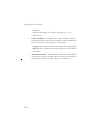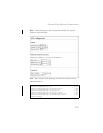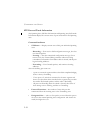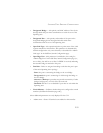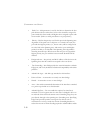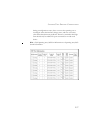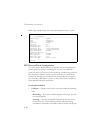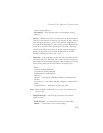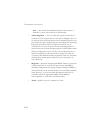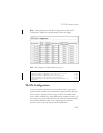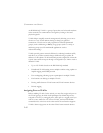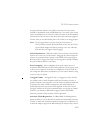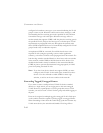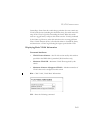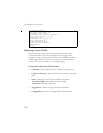
S
PANNING
T
REE
P
ROTOCOL
C
ONFIGURATION
2-59
begins learning addresses.
- Forwarding — Port forwards packets, and continues learning
addresses.
• Priority — Defines the priority used for this port in the Spanning Tree
Protocol. If the path cost for all ports on a switch is the same, the port
with the highest priority (i.e., lowest value) will be configured as an
active link in the Spanning Tree. This makes a port with higher priority
less likely to be blocked if the Spanning Tree Protocol is detecting
network loops. Where more than one port is assigned the highest
priority, the port with lowest numeric identifier will be enabled.
(Default: 128; Range: 0-240, in steps of 16)
• Path Cost — This parameter is used by the STP to determine the best
path between devices. Therefore, lower values should be assigned to
ports attached to faster media, and higher values assigned to ports with
slower media. (Path cost takes precedence over port priority.)
- Range —
Ethernet: 200,000-20,000,000
Fast Ethernet: 20,000-2,000,000
Gigabit Ethernet: 2,000-200,000
- Defaults —
Ethernet — half duplex: 2,000,000; full duplex: 1,000,000; trunk:
500,000
Fast Ethernet — half duplex: 200,000; full duplex: 100,000; trunk:
50,000
Gigabit Ethernet — full duplex: 10,000; trunk: 5,000
Note: When the Path Cost Method is set to short, the maximum path
cost is 65,535.
• Admin Link Type — The link type attached to this interface.
(Default: Auto)
- Point-to-Point — A connection to exactly one other bridge.
- Shared — A connection to two or more bridges.




